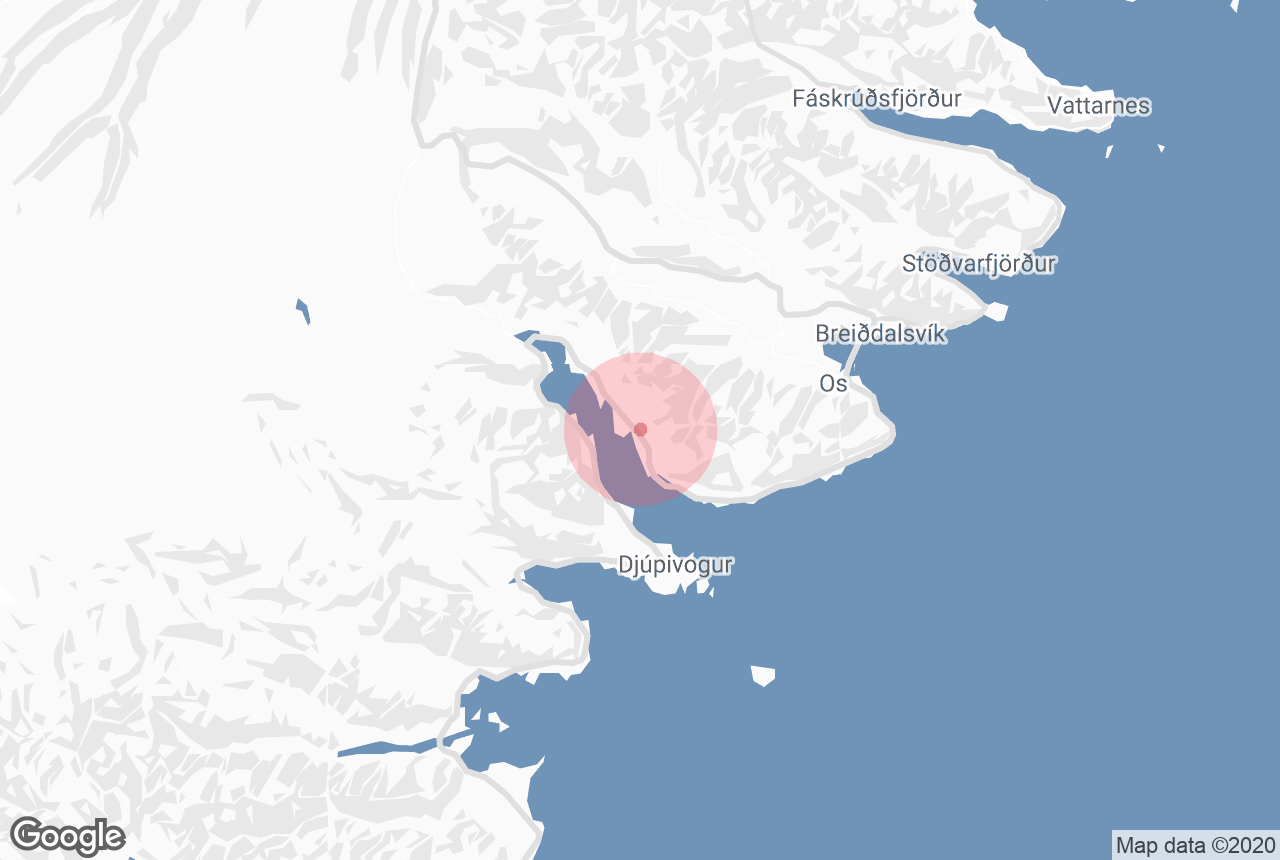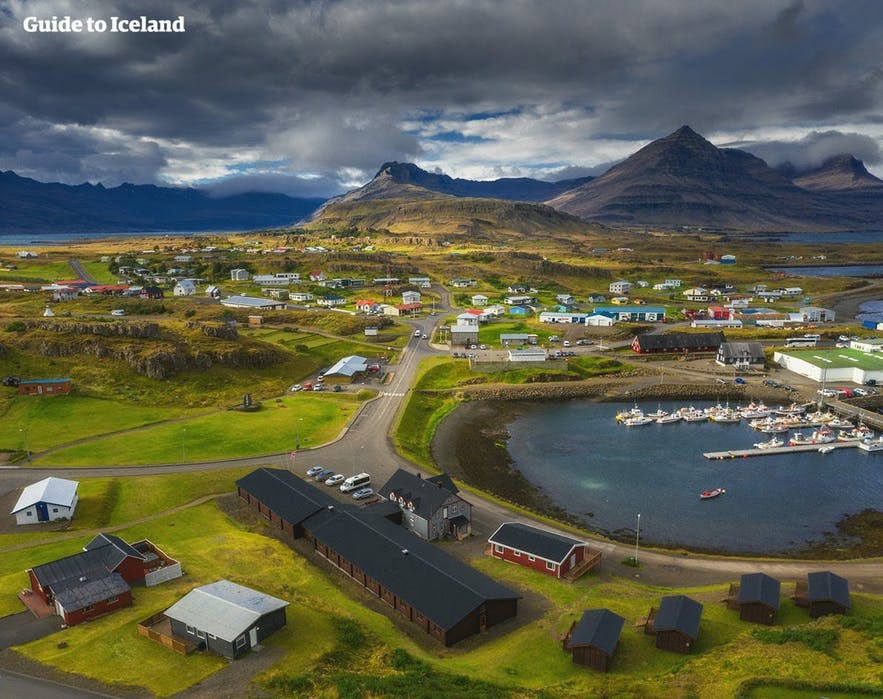
The Eastfjords of Iceland comprise a 75-mile (120-kilometer) stretch of coastline, from Berufjordur Fjord to the small fishing village of Borgarfjordur Eystri.
Travelers often overlook the Eastfjords because they’re too far for a day trip from Reykjavik. That distance is actually a benefit for those seeking a more distinctive Icelandic experience. Visitors to the Eastfjords can expect a quieter, more relaxed adventure — an ideal setting for those who enjoy taking the journey at their own pace.
Why You Can Trust Our Content
Guide to Iceland is the most trusted travel platform in Iceland, helping millions of visitors each year. All our content is written and reviewed by local experts who are deeply familiar with Iceland. You can count on us for accurate, up-to-date, and trustworthy travel advice.
For those planning their trip, this guide to Iceland's Eastfjords offers insight into what makes the region so unique. Whether you're embarking on self-driving tours or joining Eastfjords tours, exploring this hidden gem promises an unforgettable experience far from the usual tourist trail.
Key Takeaways
-
The abundant wildlife and diverse geography of the Eastfjords make it highly attractive to outdoor enthusiasts and nature lovers.
-
Traditional Icelandic culture is on display in the towns and villages throughout the Eastfjords.
-
Fishing villages and small towns give visitors the chance to slow down and experience a quiet way of life not commonly experienced elsewhere.
Nature and Geography
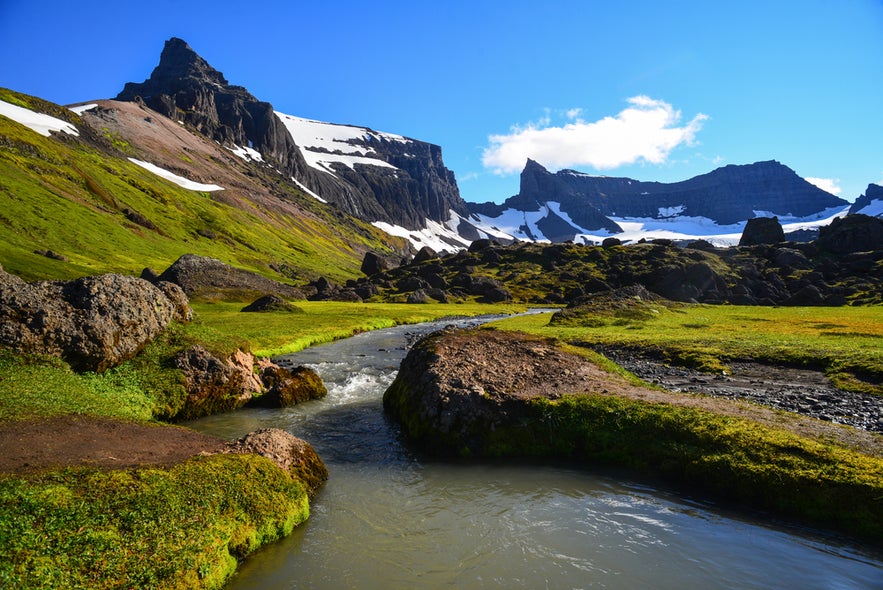 The Eastfjords represent the best of what Iceland has to offer. The area offers a quiet atmosphere, fantastic scenery, remote villages, sparkling lakes, dense forests, and traditional farms.
The Eastfjords represent the best of what Iceland has to offer. The area offers a quiet atmosphere, fantastic scenery, remote villages, sparkling lakes, dense forests, and traditional farms.
Some of the top natural attractions in East Iceland include:
-
The Vok Baths
-
Vatnajokull National Park
Wildlife of the Eastfjords
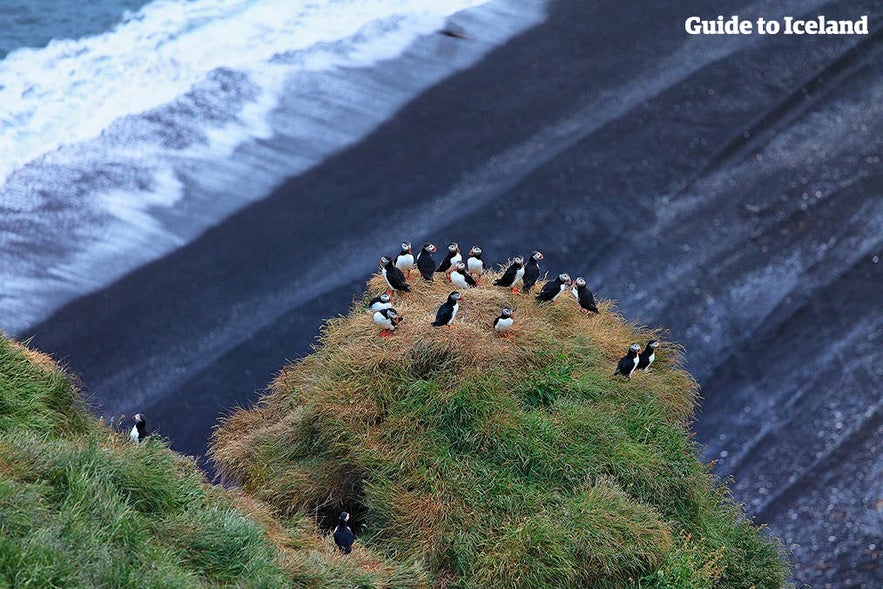
A variety of birds live inland and on the cliffs dotting the coastline. The famous Atlantic puffins hang out near areas like Borgarfjordur Eystri, along with other seabirds such as kittiwakes and fulmars. Inland birds include ptarmigans, redwings, and the elusive gyrfalcon.
Seal colonies inhabit the river estuaries running through the Eastfjords. The fertile waters also support whales and dolphins, making them visible from the shore.
Geography of the Eastfjords
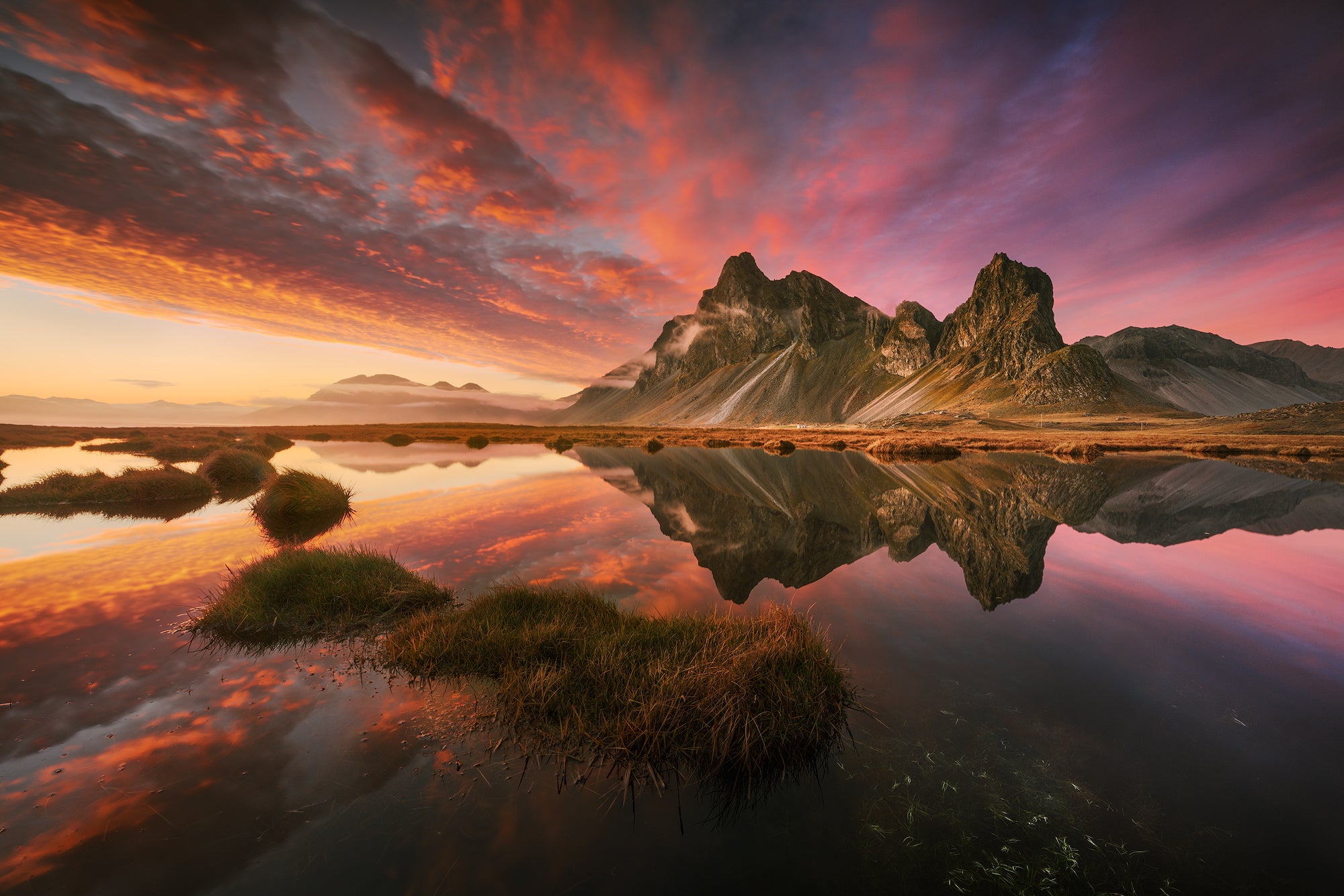 There are plenty of things for nature lovers to do in the Eastfjords. The area has incredible coastlines, rugged mountain terrain, and winding fjords that facilitate all sorts of outdoor activities.
There are plenty of things for nature lovers to do in the Eastfjords. The area has incredible coastlines, rugged mountain terrain, and winding fjords that facilitate all sorts of outdoor activities.
If you enjoy pleasant walks through nature, Borgarfjordur Eystri is a hiker’s paradise. Icelandic folklore has it that this area is home to elves and Iceland’s “hidden folk.”
Go inland and you’ll find the vast Highlands. Vatnajokull Glacier stretches to the borders of East Iceland and is so large that it’s visible from many places throughout the region.
You can also explore the incredible basalt rock formations in Studlagil Canyon. This astonishing place is one of the main attractions in East Iceland, attracting geologists and hiking enthusiasts.
Culture in the Eastfjords
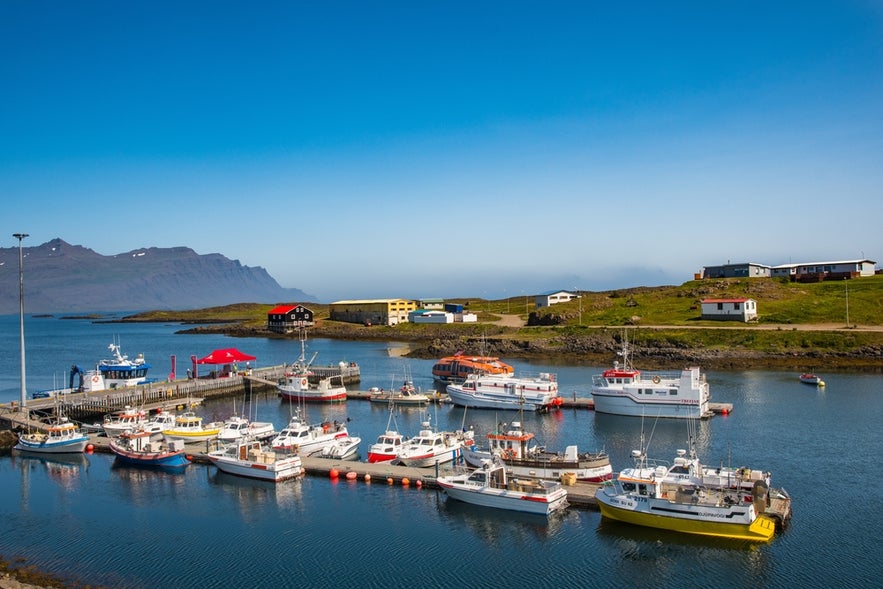 Like the culture in East Iceland, life in the Eastfjords is traditional. Fishing has been a central part of the area’s economy for centuries.
Like the culture in East Iceland, life in the Eastfjords is traditional. Fishing has been a central part of the area’s economy for centuries.
Art plays a significant role in the culture, too. Festivals are commonplace. Neskaupsstadur hosts two popular annual festivals, Neistaflug and Eistnaflug. Seydisfjordur is another go-to destination for artists eager to enjoy the rich art scene.
Folk traditions like storytelling and songs are part of the local identity. Villages often host small festivals to honor the history, music, and folk traditions of the area.
Icelanders who live in the Eastfjords have a deep respect for nature because of the intimate relationship between land and sea. Locals rely on farming and fishing with a focus on sustainability.
Towns and Villages in the Eastfjords
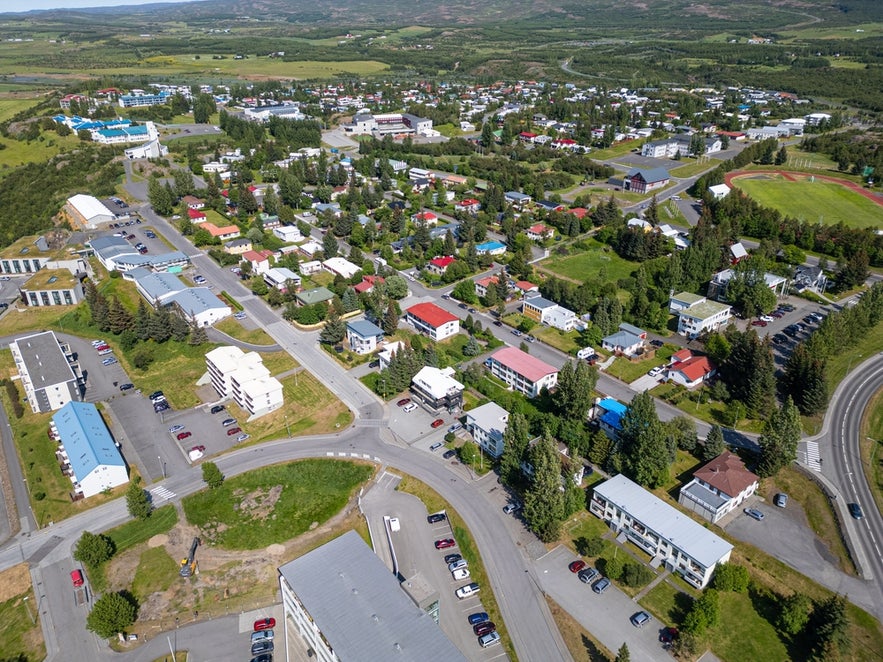 The remote towns and fishing villages in the Eastfjords offer a glimpse into Iceland’s past. Life here is slow and peaceful.
The remote towns and fishing villages in the Eastfjords offer a glimpse into Iceland’s past. Life here is slow and peaceful.
Traveling through East Iceland via Ring Road tours is a great way to explore the towns and villages that pique your interest.
Seydisfjordur
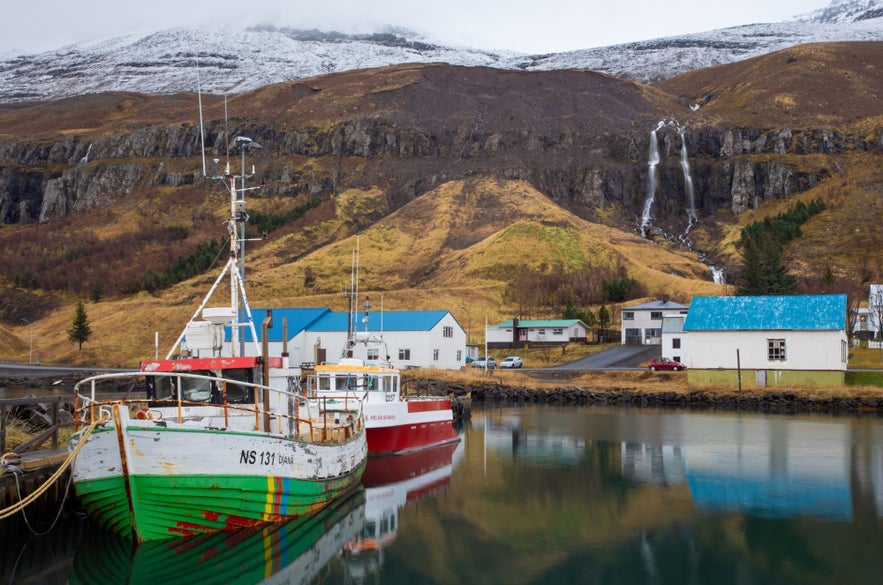 Those visiting Iceland by ferry from mainland Europe make port at Seydisfjordur. The town has a population of 700 people.
Those visiting Iceland by ferry from mainland Europe make port at Seydisfjordur. The town has a population of 700 people.
Seydisfjordur is famous for its ornate wooden architecture, Scandinavian influence, and historical herring-fishing industry. Much of the timber used to develop the town came ready-made from Norway in the 18th century. The town center features a rainbow street leading to the famous Seydisfjordur Blue Church.
Nature’s power and beauty are on display in Seydisfjordur. Booming waterfalls, flat-top mountains, and serene hiking trails surround the area. You’ll also enjoy gorgeous panoramas over the adjacent fjord.
Other activities available from or near Seydisfjordur include scuba diving, skiing, sea angling, paragliding, and horseback riding. Pay a visit to the Skaftfell Art Center to check out contemporary and traditional works by local and international artists.
Faskrudsfjordur
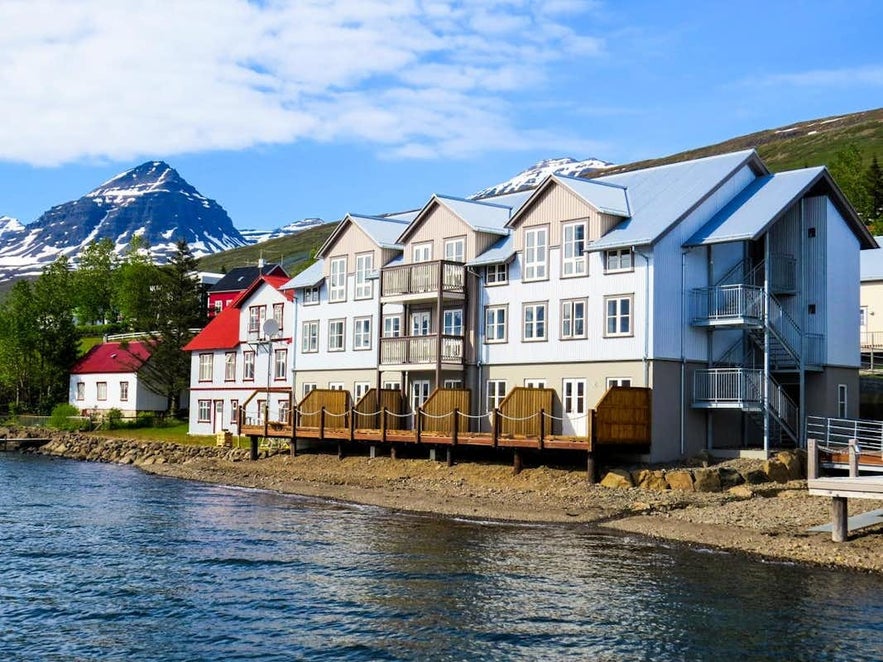 Faskrudsfjordur is a village nestled in the heart of the Eastfjords with a small population of about 700.
Faskrudsfjordur is a village nestled in the heart of the Eastfjords with a small population of about 700.
Faskrudsfjordur is sometimes called "the French Town in Iceland" due to the seasonal presence of French fishermen in the waters nearby during the late 19th and early 20th centuries. They endured harsh conditions to fish off Iceland's coast and established support facilities on land, including a hospital and a harbor.
The French fishing expeditions came to an end at the start of World War I, as most men went off to fight. However, their legacy still lives on in this quiet village. Many signs are in Icelandic and French. You can visit the French Museum to learn the full story of the fishermen.
Faskrudsfjordur is also linked to the town of Gravelines, France. Here, they hold two parties every year to celebrate their connection to Iceland. The first is in spring to celebrate the fishermen setting off for Iceland. The second is in autumn to mark their return to France.
Faskrudsfjordur also celebrates its French connection with the French Days festival in July, which is peak fishing season. It’s one of many Icelandic festivals during the summer.
While fishing is accessible in the nearby Dalsa River, there are also other exciting things to do in Faskrudsfjordur. Consider hiking to Gilsarfoss Waterfall, where you can walk behind the cascades, or taking an excursion to Sandfell Mountain.
Breiddalsvik
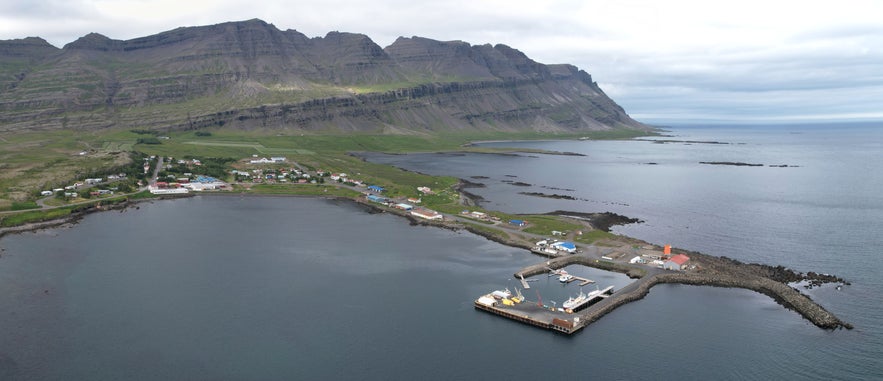
Photo from Wikimedia, Creative Commons, by Eysteinn Guðni Guðnason. No edits made.
Breiddalsvik is about 30 miles (50 kilometers) south of Faskrudsfjordur. This tiny village has a population of 140 people. If you want to experience remote, small-town life in Iceland, this is the place.
The village has outstanding hiking opportunities and is an ideal location for spotting wild reindeer. There are lovely walking trails through the nearby Jorvikurskogur Forest.
You can also take a quick trip to Breiddalur Valley, the longest and widest valley in Iceland. Or, see the black volcanic sands at Meleyri Beach.
Egilsstadir
Egilsstadir is the largest town in East Iceland and a perfect hub if you plan on visiting the Eastfjords. There’s no shortage of things to do in the town, and you can find accommodations that suit all budgets. An airport makes it easily accessible from Reykjavik.
There’s plenty to do in and around this small, idyllic town. The Heritage Museum is a great place to start. It provides an interesting look at life in East Iceland.
Egilsstadir hosts the annual Ormsteiti Town Festival, which typically takes place in August or September. Check the dates on their Facebook page if you’re planning a summer trip.
Hallormsstadarskogur Forest, the largest in Iceland, is about 15 miles (25 kilometers) from Egilsstadir. It covers 1,828 acres (740 hectares) and is home to 80 different species of trees from around the world.
The forest is on the eastern shores of Lake Lagarfljot, a great place to hike and take in the natural beauty of the area. You may also spot the infamous Lagarfljotsormur wyrm monster rumored to inhabit the lake.
The famous Vok Baths are about 3 miles (5 kilometers) outside the town. They feature geothermal water and incredible views of the surrounding landscape. Book a visit if you need to relax and recharge your batteries.
Want to see the famous Atlantic puffin? Book a 5-hour puffin-watching tour from Egilsstadir that takes you through Borgarfjordur Eystri.
Djupivogur
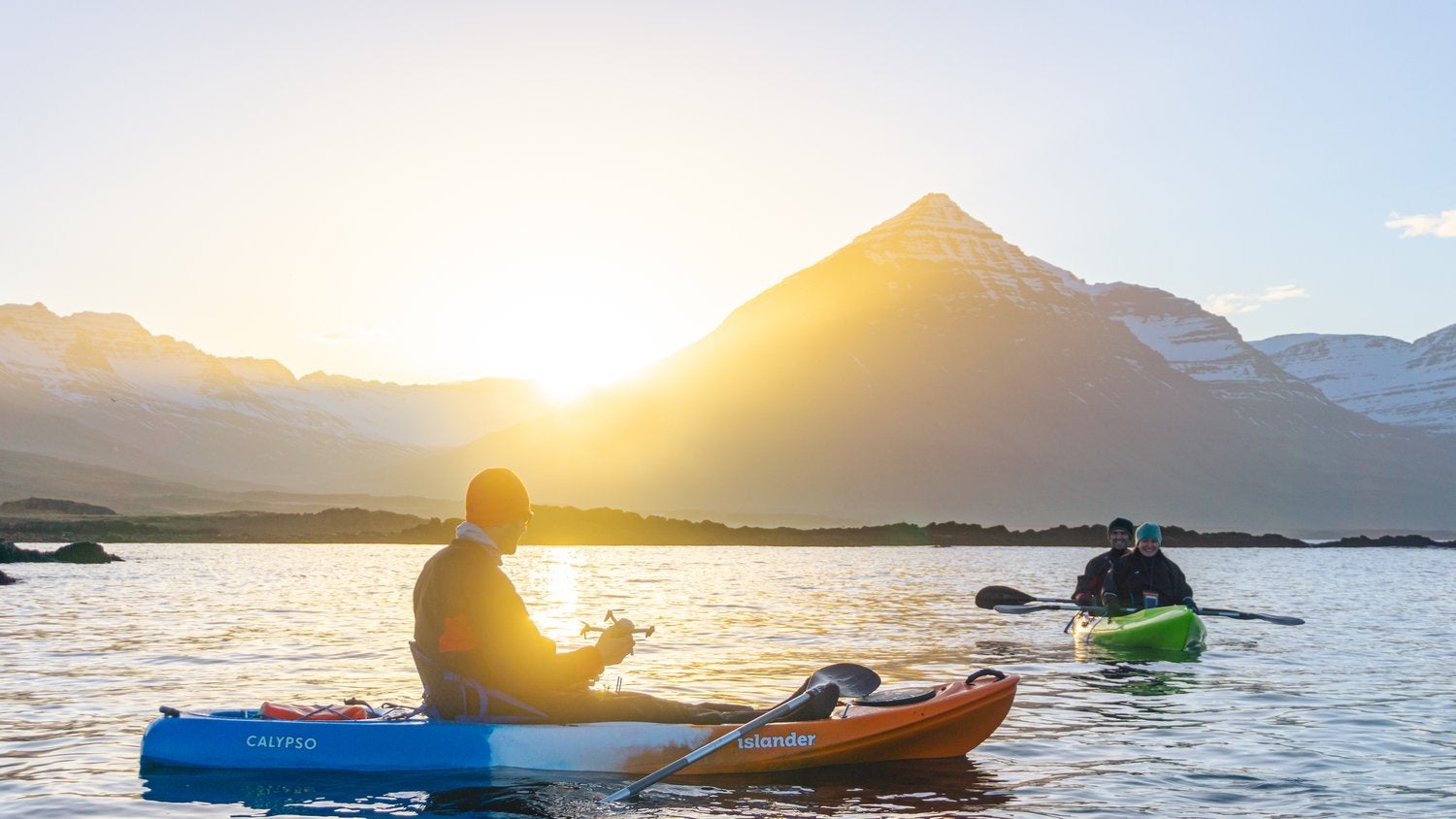 This coastal fishing village sits between two fjords on the Bulandsnes Peninsula. The surrounding landscapes alone make it worth a visit.
This coastal fishing village sits between two fjords on the Bulandsnes Peninsula. The surrounding landscapes alone make it worth a visit.
Add Djupivogur to your itinerary if you’re interested in bird-watching, hiking, or whale-watching. Book a kayaking tour and take in Berufjordur Fjord and Bulandstindur Mountain. You can also experience the area’s waterfalls and valleys on a guided tour. Make sure you bring your camera.
Life is calm and quiet in the village, which is part of the Cittaslow movement. Locals are in tune with nature and embrace sustainable living. There’s also a lively art scene in the village, with art installations and a contemporary art museum featuring interesting works.
Papey Island is off the coast of Djupivogur. This uninhabited island is named after Gaelic monks (the Papar), who may have inhabited the island long before the Norse settlement.
Large puffin colonies live on Papey Island. It’s also interesting to see the remnants of the former settlement, which include a lighthouse, a church, and a weather station.
Tours in the Eastfjords
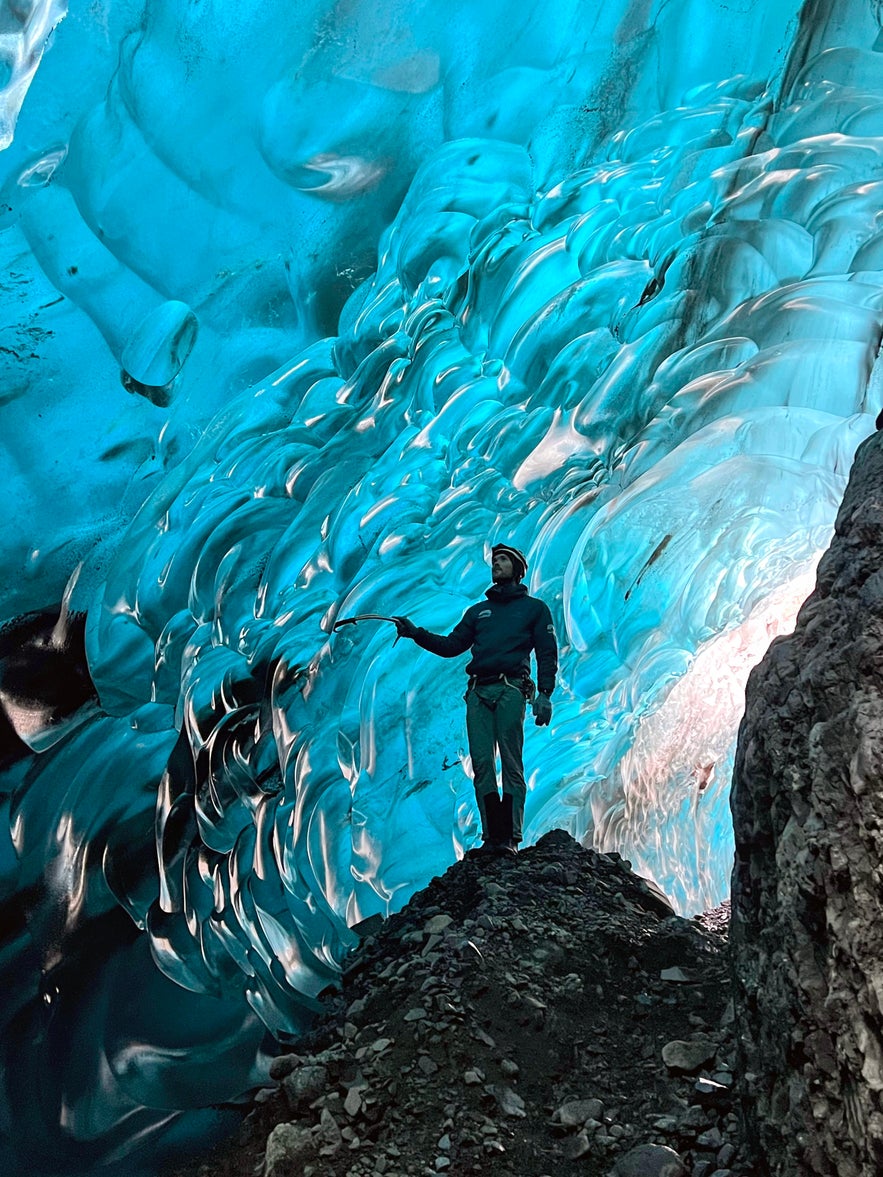 Ready to find out why people consider the Eastfjords one of Iceland’s hidden gems? Check out the country’s car rental options to begin your East Iceland road trip.
Ready to find out why people consider the Eastfjords one of Iceland’s hidden gems? Check out the country’s car rental options to begin your East Iceland road trip.
After selecting your preferred vehicle, you can pick from a range of self-drive tours with thoughtfully planned itineraries. You can also choose from one of the vacation packages and multi-day tours below:
-
11-Day Self-Drive Tour of the Ring Road and the Eastfjords — Venture into remote areas of the Eastfjords while stopping at the most popular towns and natural attractions.
-
5-Day Adventure Tour of the South Coast, Eastfjords, and Highlands — This incredible outdoor excursion takes you to glaciers, nature reserves, hiking trails, and fjords.
-
10-Day Clockwise Ring Road Self-Drive Tour — Experience the best of Iceland, including the rugged landscapes and quaint villages of the Eastfjords.
-
6-Day Guided Vacation Package of the Ring Road — Set off from Reykjavik on this exciting adventure around Iceland.
There are plenty of other Eastfjords tours to choose from. Find your ideal adventure and get the most out of your time in this remarkable region of Iceland.
FAQs About Iceland’s Eastfjords
Still curious to learn more about the Eastfjords? Check out these commonly asked questions.
When is the best time to visit the Eastfjords?
Summer (June to August) is the most popular time to visit East Iceland. You’ll enjoy long daylight hours, warm weather, and vibrant wildlife.
Winter (November to February) can be quite cold and snowy, but it’s ideal for seeing the northern lights in Iceland and experiencing magical winter landscapes. Some roads may be closed due to snow, and it’s best to travel in 4x4 vehicles.
Is it easy to get around the Eastfjords?
The Eastfjords are less developed for tourism compared to the more visited regions of Iceland, but it’s still easy to get around by car. The Ring Road connects many of the towns, but some areas might require you to drive on gravel roads.
Are there accommodations in the Eastfjords?
There are a variety of accommodations available, ranging from cozy guesthouses and farm stays to more luxurious hotels. Egilsstadir has the most choices, but smaller villages also offer lovely places to stay.
What are the local food specialties?
The Eastfjords offer a range of local and traditional Icelandic foods. Reindeer is an East Iceland specialty. You’ll also find locally raised lamb served as a roast or stew. Make sure you try kleinur, a traditional Icelandic pastry.
Can I camp in the Eastfjords?
You can camp in designated sites throughout the Eastfjords. Most campsites are in towns like Egilsstadir and Seydisfjordur. Modrudalur Farm is a unique spot for those looking for a remote camping experience in Iceland.
What should I pack for my trip?
Iceland has unpredictable weather. When packing for your trip, waterproof jackets and pants are essential, especially if you plan to hike or explore nature. Bring layers for warmth, as temperatures vary. Sturdy hiking shoes are a must.
How are the roads in the winter?
Driving in Iceland can be challenging in the winter. Some roads close or become impassable due to snowstorms. The Ring Road is usually maintained and open year-round. We recommend a 4x4 vehicle if traveling through this route in the winter.
Is public transportation available?
While there’s limited public transportation outside of Reykjavik, there are some bus routes connecting the Eastfjords with other parts of the country. Check out routes from Straeto, a public bus company that helps visitors reach their destinations.
Can I visit the Eastfjords if I don’t speak Icelandic?
Yes. Most people working in tourism or hospitality in the Eastfjords speak English. Many signs, menus, and information in tourist areas are available in English, so you can easily communicate. However, locals appreciate you learning a few basic Icelandic phrases.
Do towns have internet access?
Yes, towns in the Eastfjords have decent internet access. You may struggle with a weak signal in some of the more remote areas.
Discover the Peaceful Charm of East Iceland
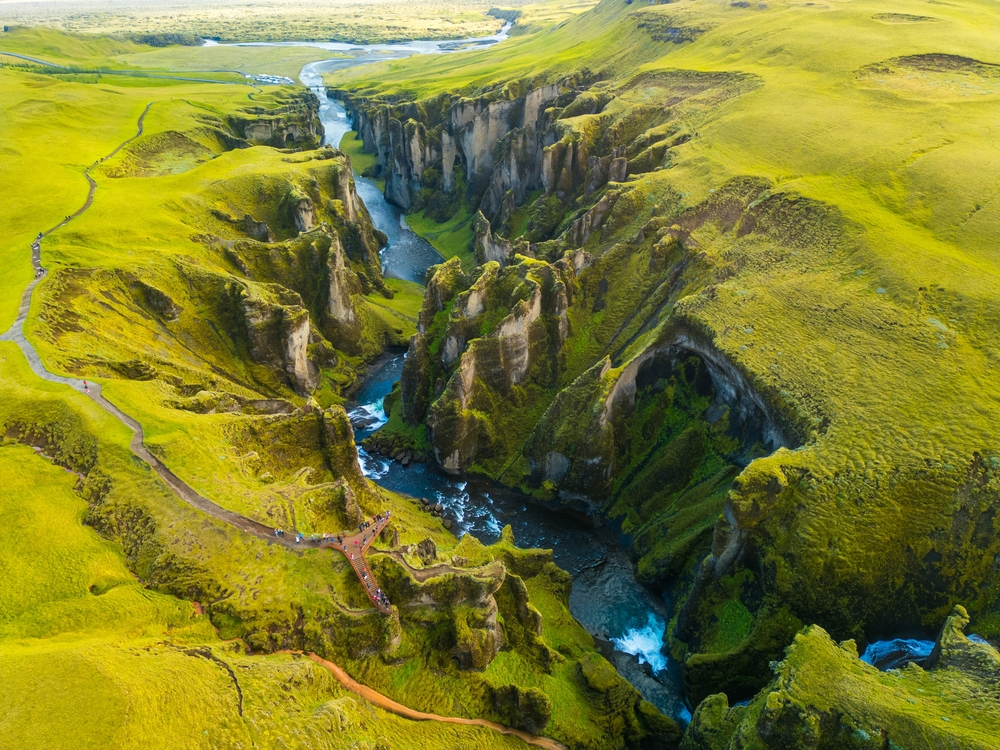 Has a trip to the Eastfjords made it onto your itinerary? Once you discover how peaceful and charming the landscapes and towns are, you won’t want to leave. It’s also the best region to visit if you want to avoid crowds.
Has a trip to the Eastfjords made it onto your itinerary? Once you discover how peaceful and charming the landscapes and towns are, you won’t want to leave. It’s also the best region to visit if you want to avoid crowds.
Learn more about Icelandic culture and nature in the Eastfjords and beyond by checking out expert travel guides and articles about the best places to visit and top attractions along the Ring Road.
